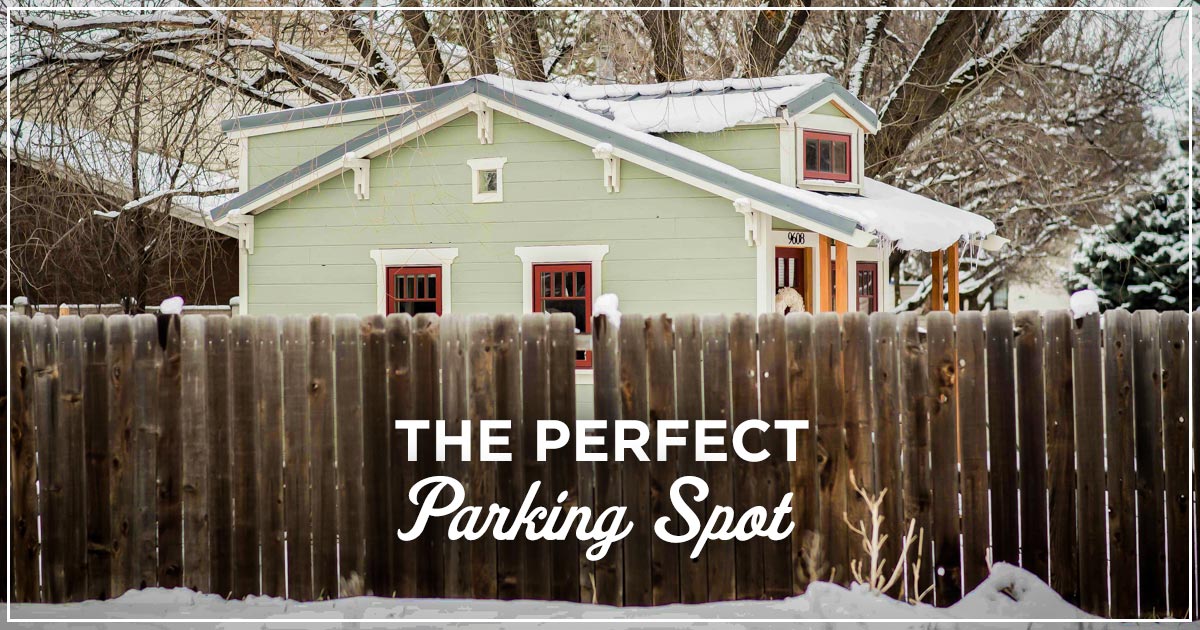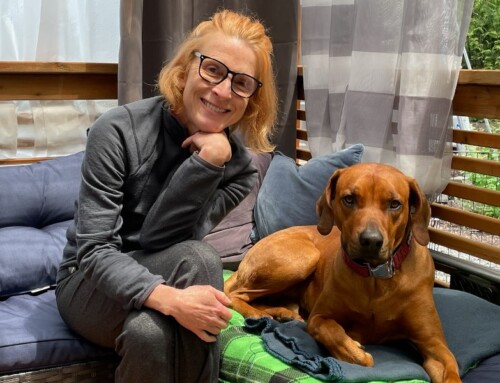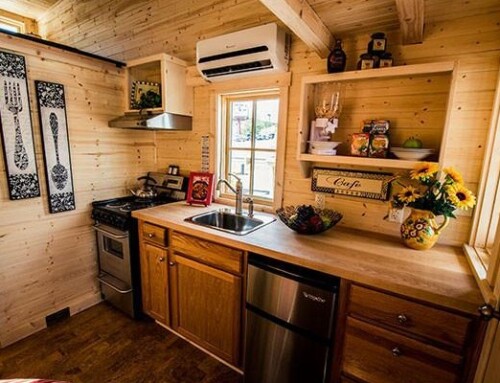Tips for Finding Your Perfect Spot
Over the last several years, my boyfriend and I have parked our tiny house in a wide variety of locations. By far our most frequent parking locale has been backyards. Always so convenient—less expensive than RV parks and close to town. These spots can be readily available, especially with many friends and family with sizable yards.
In this situation, both parties can enjoy their private space and fun time together, as they choose. We have parked in my big sister’s backyard in Utah multiple times. During our most extended stay, two and a half months, family time became something more significant. That is to say; we created a temporary mini co-housing community. Read more about various kinds of tiny house communities, including backyard villages, here.
Backyard parking is a practical way to share resources and build community.
My sister’s backyard was a kind of communal living space. Watching my nephews, Charlie and Luke, play from our tiny house windows was such a treat. They loved visiting us. It was a daily adventure for them. Luke frequently swept the snow off our steps and porch. He was so sweet!
During the day, we would go into the big house to help out or chill. Regularly, we shared meals. In addition to contributing to utility bills, we helped with childcare and chores, like shoveling snow. It was rewarding to help each other and to grow closer bonds with my family.
My sister’s backyard is pretty ideal for tiny house parking. It conveniently features a level gravel pad. Though, there are no RV hook-ups. Fortunately, we can run our entire house’s electric system there.
When considering backyard parking for your tiny house RV, it’s essential to know your needs. For more on how to determine these, read this post.
Did you know backyard parking is the most common tiny house parking situation?
Tiny houses in backyards can act as accessory dwellings units (ADUs). You can find the vast majority of tiny homeowners in this set-up, parked on the property with a primary residence. It’s a practical, convenient option. The environmental impact is lower, through the use of available land and existing infrastructure.
Backyard parking is also mutually beneficial for the tiny dweller and property owner because lot rent can contribute to the host’s mortgage and taxes.
Additionally, the tiny house ‘backyard neighbor’ can help maintain the property. For elderly homeowners or single parents, this can be especially valuable. As a result, work/trade agreements often occur. In exchange for reduced rent, the tiny dweller is responsible for some maintenance duties, like mowing the grass. To avoid any misunderstanding, establish a clear understanding of expectations by creating a written agreement between the two parties.
ADUs, commonly known as granny flats, backyard cottages, in-law suites, and accessory apartments, are a form of residential infill housing on the precipice of a massive revitalization in the US.
Legal Considerations
It is important to note that most cities do NOT allow tiny houses as ADUs. Slowly but surely this is changing. Watch our documentary-series, Living Tiny Legally to learn more.
For now, most tiny houses in backyards are at the mercy of their neighbors. Therefore, one complaint can result in a code violation notice and eviction, in as little as 48 hours or up to 90 days. You advocate zoning change in your community. Start a conversation with your local planning department. If other kinds of ADUs are allowed, you will have a big leg up.
Another option is moving to a place that already allows tiny houses in backyards.
A few places where you can legally park as an ADU:
- San Luis Obispo, CA
- Lyons, CO
- Eagle Mountain, UT
- Fresno, CA
- Nantucket, MA
- El Paso County, CO
- Coconino County, AZ
And more communities are working on it! Expect to find more coming soon in states such as Massachusetts, California, Oregon, Washington, Arizona, New Hampshire and Colorado.
Responsible Risk Taking
Parking on property not zoned for tiny houses is a risk. If you join the countless others doing it, there are a few things we highly recommend. First, talk with the immediate neighbors. Let them know what you’d like to do. Find out if they have any concerns.
Follow the example of Going Places, a tiny cohousing community in a Portland neighborhood. The community members reached out to their neighbors. They were then able to address concerns, like privacy. One of two tiny houses has a window that directly faces a neighbor’s yard. They found an easy solution that satisfied all parties. A frosted, static window cling placed on the offending window created visual privacy.
Additionally, we encourage you to be a respectful neighbor. Be polite and responsible. Properly maintain your house and the landscaping around it. Become an asset to your host (the property owner), to your neighbors and the local community. For instance, take out the trash without being asked. Likewise, offer a helping hand to a neighbor in need. Perhaps, volunteer for a local good cause. Bottom line: be a good neighbor.
The Backyard Parking Search
Currently, our tiny house is parked in central Oregon. Usually, we find parking through networking. But this time, I got creative with our search. I found a Facebook Marketplace listing for a room for rent and the pictures in the listing showed a large backyard that had ample space for our 20′ tiny house. If the owner was looking for supplemental income, it seemed like he or she might be open to hosting us. So I sent a polite inquiry.
Meanwhile, on Craigslist, I posted a flyer about our tiny house parking needs. It included the services we were willing to offer for reduced lot rent—snow shoveling, pet care, and basic home security. Because we realized that paying rent might be more straightforward, we set a budget of $300/month which excluded any on-site work. Based on our local RV park research, we found spots with full hook-ups starting at $500/month. Since a backyard typically doesn’t have RV hook-ups, we felt our rent request was appropriate.
Ultimately, five landowners offered us parking, including the Facebook Marketplace poster. The house with the room for rent is where we settled. It is an ideal backyard spot for us. We love the close access to downtown, shopping, and a beautiful river trail. What’s more, it’s located on a dead-end street in a quiet neighborhood. There are also other accessory dwellings on the property, a historic cabin and a fifth wheel on an RV pad. In short, we feel entirely secure here. However, if there’s ever an issue, we have several fallback parking options.












Unfortunately back East communities are REALLY behind the times and most places do not allow it. I need a Granny Pad now and wanted to build a small apartment over my daughter and son-in-law’s garage but that also is not allowed. A tiny house would be even nice and would be portable. How does one start to go about getting laws changed to allow this accommodation? I am not sure where to start. Can you tell me specific communities from whom I can get rules and regulations to study and bring before community governments?? Thank you for your help!!
Joan M Barbour
jmbarbour1@yahoo.com
Edinboro, PA 16412 soon to be Lake City, PA
Soooo you don’t need sewage hookups or electrical hookups? Just trying to figure that part out….
Hi Dawn, thanks for your question. If you’re in an “off-grid” situation you’ll have portable connections for repositories for sewage and your electrical will be solar or generators. Check out Tiny House Expedition’s YouTube channel for information on how tiny how hookups work.